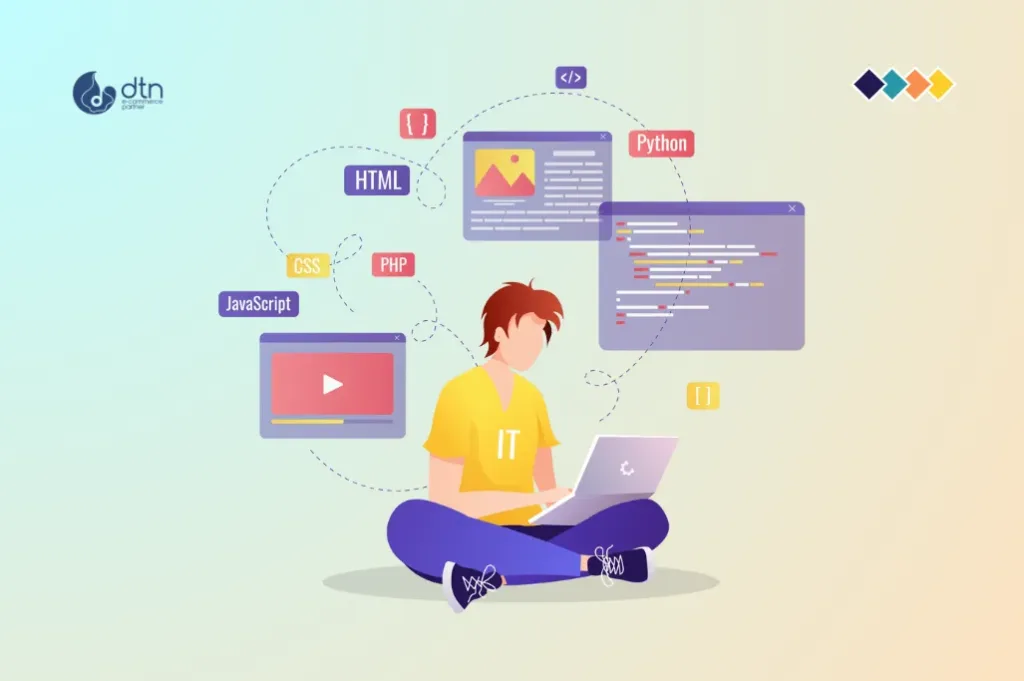The world of e-commerce is constantly evolving, and so are the expectations of its users. Accessibility is no longer a nice-to-have, it’s a necessity. In an increasingly diverse digital landscape, ensuring that your online store is accessible to all users is crucial for inclusivity and maximizing your reach.
While there are numerous ways to improve your e-commerce site’s accessibility, progressive enhancement stands out as a powerful and effective approach. This strategy focuses on building a foundation of accessible core functionality, then adding layers of complexity and enhancements that enhance the experience for users with differing needs and abilities.
Here’s a comprehensive guide to progressive enhancement techniques for e-commerce accessibility compliance, with actionable steps to implement them.
Table of Contents
1. Laying the Foundation: Core Accessibility Features
Before diving into enhancements, prioritize foundational accessibility features that ensure your website is usable for everyone:
- Semantic HTML: Utilize HTML5 semantic elements (e.g., <nav>, <article>, <aside>) to structure your content logically. This helps assistive technologies like screen readers understand the page’s hierarchy and content relationships.
- Clear and Concise Content: Avoid jargon and complex wording. Use headings (h1-h6) to structure content logically and clearly. Utilize descriptive text alternatives (alt text) for images to provide context for screen readers.
- Keyboard Navigation: Ensure all interactive elements (buttons, links, forms) can be navigated and activated using the keyboard. Test your website thoroughly with keyboard-only navigation to identify potential issues.
- Focus Management: Implement clear focus indicators (visual cues) to guide users through interactive elements. Ensure focus stays within interactive elements, preventing accidental focus jumps.
- Color Contrast: Adhere to WCAG color contrast guidelines to ensure text and background colors provide adequate contrast for users with visual impairments. Utilize tools like contrast checkers to verify compliance.

2. Enhancement Layer 1: Improving the User Experience
Once the core accessibility foundation is in place, start adding enhancements to improve the user experience for individuals with specific needs:
- ARIA Attributes: Employ ARIA attributes (Accessible Rich Internet Applications) to enhance the accessibility of complex or dynamic web elements. For example, use ARIA roles to define the purpose of custom controls, ARIA states to communicate the current state of an element, and ARIA properties to provide additional information.
- Interactive Elements: Optimize interactive elements for users with motor impairments. Use large clickable areas, provide hover effects for visual feedback, and consider offering alternative input methods like voice control.
- Forms and Input Fields: Design accessible forms that are easy to navigate and complete. Provide clear labels for form fields, utilize fieldsets to group related fields, and offer error messages in a way that is easily understood. Implement autocomplete functionality for form fields to reduce user effort.
- Image Optimization: Use descriptive and accurate alt text for all images. Implement a mechanism to display high-quality images for users with visual impairments, while offering lower-resolution versions for users on slower connections.
- Audio and Video: Provide captions and transcripts for all audio and video content. Consider adding a separate transcript file for users who prefer reading over listening. Utilize closed captions for users who require a visual representation of the audio content.

3. Enhancement Layer 2: Advanced Features for Enhanced Accessibility
As you progress, consider these advanced features for an even more inclusive user experience:
- Personalized Settings: Provide users with customizable options to tailor their experience, such as font size adjustments, color schemes, and high-contrast modes. Offer the ability to change language preferences, making your website accessible to a wider international audience.
- Mobile Accessibility: Ensure that your website is fully accessible on mobile devices. Implement touch-friendly interactions, use larger tappable areas, and optimize content for smaller screens.
- Multi-Sensory Experiences: For users with visual impairments, consider offering alternative formats for content. Provide audio descriptions for images, use audio navigation, and make use of text-to-speech capabilities.
- User Feedback: Implement mechanisms for users to provide feedback on accessibility features. This will help identify areas for improvement and ensure that your site remains inclusive and responsive to user needs.
- Regular Testing: Regularly test your website using assistive technologies (screen readers, keyboard-only navigation) to identify potential accessibility issues. Conduct user testing with individuals with diverse disabilities to obtain real-world feedback and identify areas for improvement.

Conclusion: Embracing Progressive Enhancement for Accessibility
By implementing progressive enhancement techniques, you can build a more accessible and inclusive e-commerce experience for all users. Remember, the journey to accessibility is ongoing. Continuous evaluation, feedback, and improvement are key to building a website that meets the needs of all users.
By embracing progressive enhancement, you’re not just making your website accessible; you’re making it better for everyone. You’re creating an inclusive environment that welcomes all users, regardless of their abilities. In today’s competitive e-commerce landscape, accessibility is not just a moral imperative but a strategic advantage that empowers you to reach a wider audience and build a stronger, more sustainable brand.
Frequently Asked Questions
We’ve compiled a list of answers to common questions.
What is progressive enhancement, and why is it important for e-commerce accessibility?
Progressive enhancement is a strategy that builds a foundation of accessible core functionality, and then adds layers of complexity to enhance the experience for users with different needs and abilities. It’s important for e-commerce because it ensures that all users, regardless of their abilities or devices, have access to a usable and effective online shopping experience.
What foundational accessibility features should e-commerce websites prioritize?
Foundational accessibility features include semantic HTML for clear structure, keyboard navigation support, focus management for interactive elements, color contrast adherence to WCAG guidelines, and clear, concise content with descriptive alt text for images.
How can ARIA attributes improve e-commerce website accessibility?
ARIA (Accessible Rich Internet Applications) attributes can enhance the accessibility of complex or dynamic web elements by defining roles, states, and properties. This provides more context to assistive technologies, ensuring that all users, including those relying on screen readers, can understand and interact with the website effectively.
What are some advanced features for enhancing e-commerce accessibility?
Advanced accessibility features include personalized settings for font size and color schemes, mobile accessibility optimization, multi-sensory experiences such as audio descriptions and text-to-speech, user feedback mechanisms, and regular testing with assistive technologies and diverse users.
How can continuous evaluation and feedback improve accessibility in e-commerce?
Continuous evaluation and user feedback help identify areas for improvement, ensuring the website remains accessible and responsive to user needs. Regular testing with real users and assistive technologies can uncover issues that automated tools might miss, leading to a more inclusive and effective user experience.



